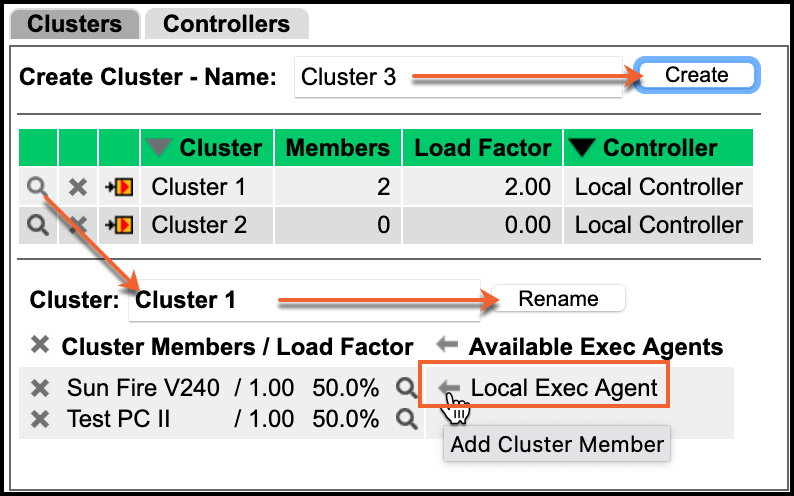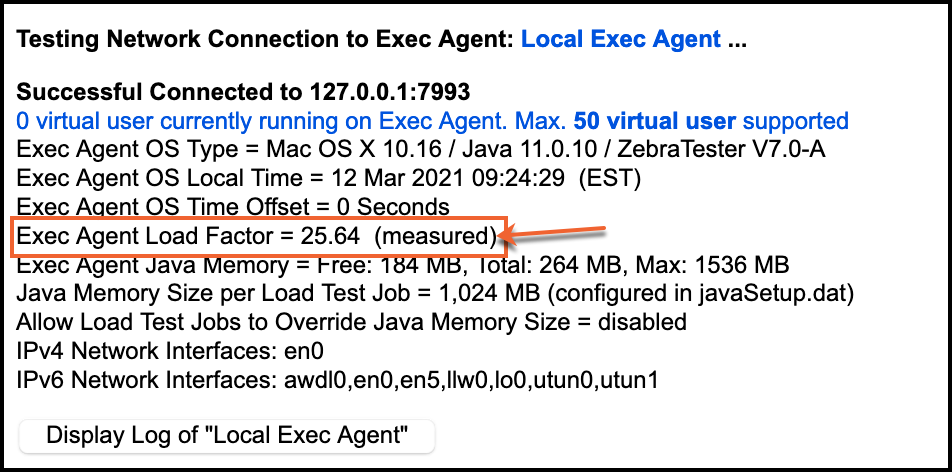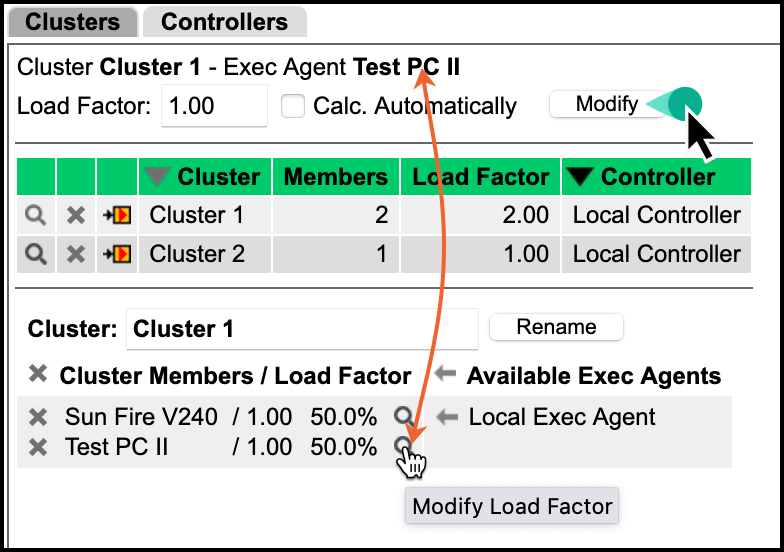...
Configuring Load-Releasing Clusters
If several Exec Agents have been defined, they can be combined to form a load-releasing cluster. You can also define more than one cluster by using some of the same Exec Agents in several different clusters. After an arbitrary name of the cluster has been entered, the cluster members (Exec Agents) can be added to the cluster by clicking on the grey arrows in the list of Available Exec Agents. | In the above screenshot, we’ve clicked on the magnifier icon to show the Cluster 1 has two members, Sun Fire V240 and Test PC II. The Local Exec Agent is available to add to Cluster 1 by clicking on the grey area next to the Agent name. |
To get a suggestion for the load factor of a particular Exec Agent, you can click on the icon within the list of all defined Exec Agents. It is, however, recommended that you click several times on the icon in order to get a stable result. Even so, this result may not accurately reflect the power of the computer system. | |
By clicking on the magnifier icon of a cluster member, the Load Factor of this member can be modified. The load factor controls how many users will be assigned to this cluster member when the load test is distributed across the cluster members. The load factor by itself is an abstract value, meaning that the distribution of the users is made based on the ratio between the load factors. If you mix strong and weak systems within the same cluster, it is recommended that you give a higher load to the stronger systems than to the weaker systems. |
| Info |
|---|
It is not necessary that all cluster members have the same operating system time. Each time a cluster job is started, the cluster job controller automatically measures the time differences between the cluster members. These measured time differences will be automatically accounted for when the consolidated statistics data are merged. |
...


